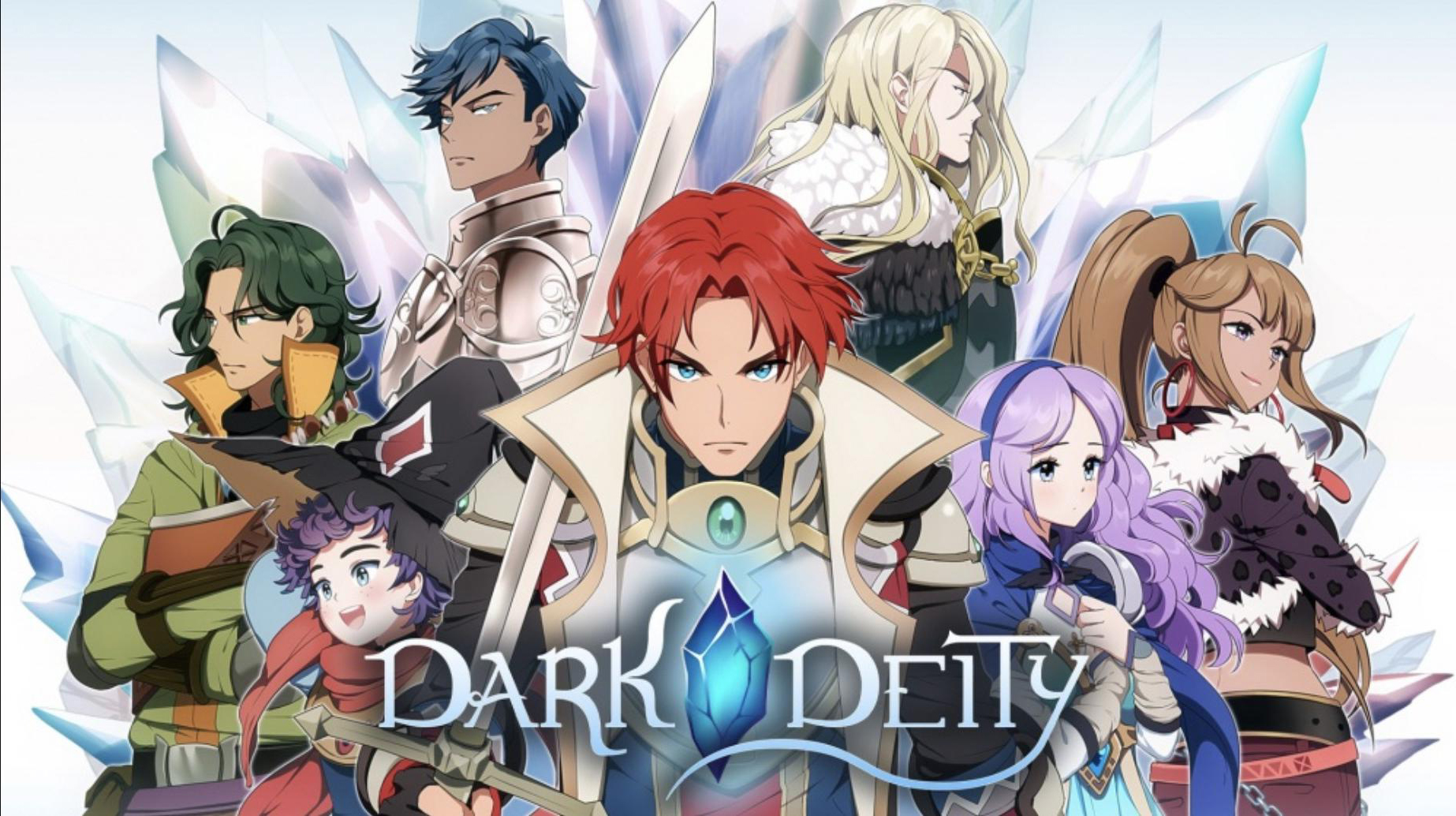I have always leaned more towards the sprite-based Fire Emblem entries than the 3D ones due to their wonderful sprite animations and personality, so when Dark Deity was first revealed I was instantly intrigued by this new indie title. I was disappointed when it was shown to be a PC-only title at the start, but I had a feeling it would eventually come to consoles. Low-and-behold here we are, with Dark Deity’s release on the Nintendo Switch and I can finally dive in!
Dark Deity follows the exploits of four recently conscripted students from the prestigious Brookstead Militar, Irving, Garrick, Maren, and Alden, as they are forced into a war by their revenge-seeking king. Over the course of 28 levels, they will grow their ranks from a gaggle academy graduates into a strong formidable army and have to overcome obstacles and dangers in their quest to survive.
Main character Irving fulfills the role of a sword-wielding hero that’s destined for greatness. He and his best friend, the archer Garrick, have good, well-written chemistry. It’s standard high fantasy fare, but the story kept me interested with its solid presentation and paces, as well some nice surprises sprinkled throughout for good measure.
Fans of Nintendo’s long-running series will instantly feel a sense of familiarity with Dark Deity in its slick sprite animation, top-down grids, and recognizable character classes. It doesn’t just stop at repeating the Fire Emblem formula, though. Some of these systems have been further expanded and made richer in Dark Deity.

Major work has been done on the class progression and promotion giving each character a far larger pool of options to evolve their characters into. In place of a more straightforward path, Dark Deity gives players a few options to choose from when upgrading their classes, and from there, they will have even more options when they promote a character a second time. As an example a Cleric character, once they reach level 10, you can choose to promote it into either an Inquisitor, Guardian, Priest, or Acolyte class which can then all be promoted into an additional four more classes! These additional options are great incentives to replay the game to try out different army makeups, and I’m a big fan of the addition.

Dark Deity’s combat has seen some added mechanics and depth as well. Each character comes with four different weapons, each that can be upgraded and improved but are conducive to different situations. Everyone will have a weapon that can do more damage at the expense of less likely critical hits and slightly lower accuracy, one that is more accurate but deals less damage, one that is more likely to land critical hits, and the final one is a balanced across the board option. Selecting which weapon you want to use in a fight is a simple button press to cycle through the options prior to combat. Nice and painless.
Should your characters die in an unpleasant and painful way, however, Dark Deity forgoes the permadeath aspect in favor of permanent injuries. When a character falls in combat, they may lose a finger or some other variety of impairment that will reduce one of their stats. I find this is a nice middle ground between forever losing a character and no detriment at all because preventing these injuries will still act as a good incentive to plan your strategies carefully.

For everything I do like about Dark Deity, the sprites, combat, progression, and whatnot, I just could not fall in love with the game. I can only speak to this new Switch port, but Dark Deity has some serious rough patches that really detracted from the overall enjoyment. Most of these issues come down to a lack of optimization and refinement.
Dark Deity is plagued with loading screens that occur before and after story scenes and before and after combat encounters, where the game simply cuts to a static image with the words “Loading x%” in the lower corner. When the frequency of these screens paired with the abruptness and length of them, would regularly dispel much of the tension and drama of the moment. Replacing it instead with a mild annoyance that I had to sit through another loading screen.

The lack of this refinement extends into more general gameplay as well during combat. Oftentimes various sound effects like the level-up jingle will play over top of the map’s track. Whenever a character gains experience, the screen will fade to black to show the experience bar filling. If you are playing with the combat animations turned on, this feels like a seamless transition. It falls apart though if you turn off those animations. In place of the lovely, albeit repetitive, pixel skirmishes you will be treated to a screen that is constantly fading to-and-from black. Is it game-breaking? Far from, but it sure is hard to ignore when it happens…over and over and over again.
I’ve always had a special fondness and respect for well-done sprite work and animation, Dark Deity scratches that specific itch that Fire Emblem hasn’t in nearly two decades. There is a lot to appreciate and enjoy here and it just feels right to have it find a home on the Nintendo Switch. The story and characters are nice and I did have a good time with the game. However, the numerous loading screens and other rough spots really bum me out, detracting from what could have been a magical experience. I hope that developer Sword & Axe found enough success that they will develop a sequel and hopefully, these blemishes will be smoothed out and Dark Deity turns into a long-running series and continues to scratch that classic tactical itch.

Dark Deity is currently available for the Nintendo Switch and PC via Steam!
A code was provided by the game’s PR partner.






